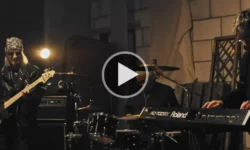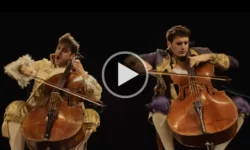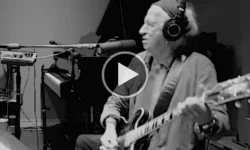U2 – I Still Haven’t Found What I’m Looking For
U2
U2, the iconic Irish rock band formed in 1976, has left an indelible mark on the music world. With their unique blend of classic rock and post-punk influences, the band has crafted a sound that is both innovative and instantly recognizable. The driving force behind U2’s sonic identity is The Edge’s distinctive guitar work. This article will explore how The Edge’s approach to guitar playing bridges the gap between classic rock and post-punk, and how his style has shaped the band’s musical legacy.
The Edge’s Roots in Classic Rock
Born David Howell Evans, The Edge grew up listening to a diverse range of music, including classic rock artists like Led Zeppelin, The Who, and Jimi Hendrix. The influence of these legendary guitarists is evident in The Edge’s playing style, which often features powerful riffs, memorable solos, and a strong sense of melody. However, it’s the way he incorporates these classic rock elements with post-punk sensibilities that sets him apart from his peers.
Incorporating Post-Punk Influences
The late 1970s and early 1980s saw the rise of post-punk, a genre characterized by its experimental approach to rock music, often incorporating elements of punk, new wave, and art rock. Bands like Joy Division, Gang of Four, and Siouxsie and the Banshees made use of unconventional guitar techniques, such as unconventional chord voicings, heavy use of effects, and a focus on texture and atmosphere rather than traditional riff-based rock.
The Edge’s guitar work seamlessly integrates these post-punk elements, helping to create a sound that is entirely U2’s own. His heavy use of delay effects, minimalist approach to riffs, and innovative use of textures and harmonics serve to bridge the gap between classic rock and post-punk.
The Signature Sound of U2
One of the defining aspects of U2’s sound is The Edge’s masterful use of delay. By utilizing this effect, he creates a vast sonic landscape that gives the band’s music a sense of space and depth. Songs like “Where the Streets Have No Name” and “With or Without You” showcase his skill in crafting complex, layered guitar parts that build upon each other to create a rich tapestry of sound.
In addition to his use of effects, The Edge’s minimalist approach to riffs and melodies sets him apart from his classic rock predecessors. Rather than relying on flashy solos and intricate riffs, The Edge often opts for simple, repetitive patterns that provide a solid foundation for the rest of the band to build upon. This can be heard in tracks like “I Will Follow” and “Pride (In the Name of Love),” where his guitar work serves as a driving force that propels the music forward.
Conclusion
The Edge’s unique approach to guitar playing has played a crucial role in defining U2’s sound and setting them apart from other rock bands. By merging classic rock techniques with post-punk experimentation, he has created a style that is both familiar and innovative. As U2 continues to evolve and push musical boundaries, The Edge’s distinctive guitar work remains a key component of their enduring appeal and success.



